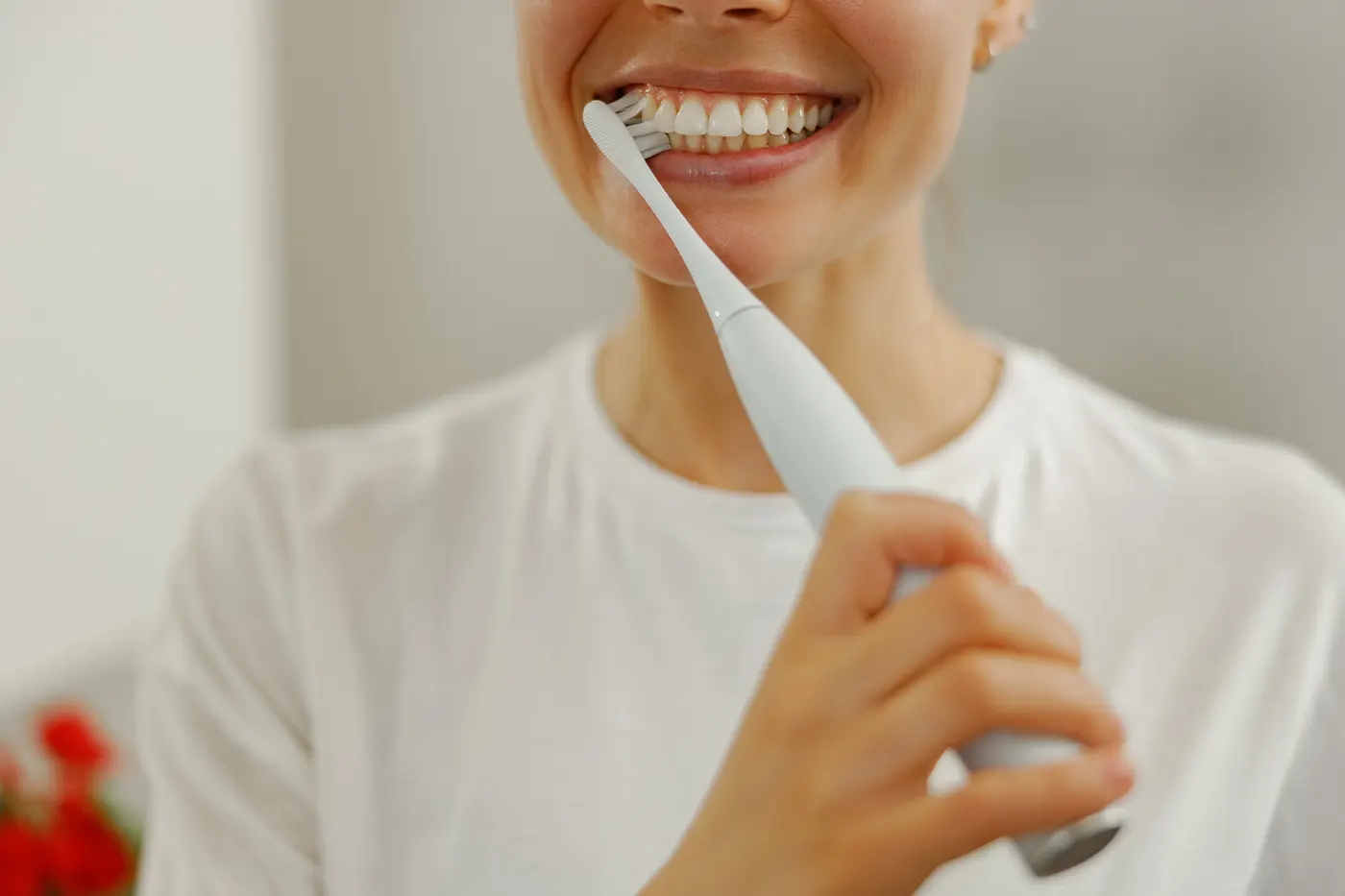
Common Causes of Bleeding Gums & How to Treat Them
July 16, 2025Walking into the oral care aisle can feel like an endless selection of products. With so many options, it’s hard to know which toothbrush or toothpaste is actually best for you. Should you use a manual toothbrush or an electric one? Do you need soft bristles or hard? What toothpaste is good for sensitive teeth? The right combination can help you remove plaque, protect your gums, and maintain your oral health.
We’ll walk you through the different types of toothbrushes, explain how to choose the best toothpaste, and answer some common questions about brushing your teeth.
Manual Toothbrush vs Electric Toothbrush
One of the first decisions to make is whether you want a manual or electric toothbrush. Both can work well when used correctly, but they have different pros and cons.
Manual Toothbrush
A manual toothbrush is the traditional kind most of us grew up with. It has no batteries, no cords, and no features. You control the motion, speed, and pressure.
Pros:
- Easy to find and affordable
- Simple to use with no charging required
- Great for travel
Cons:
- Relies entirely on your technique
- No built-in features like timers or pressure sensors
If you brush your teeth carefully and consistently for the right amount of time, a manual toothbrush can work just fine.
Electric Toothbrush
An electric toothbrush does some of the work for you. The brush head vibrates or rotates to help remove plaque more efficiently. Many electric models have features like pressure sensors, timers, and different cleaning modes.
Pros:
- Easier to use for people with limited hand mobility
- More effective at cleaning hard-to-reach areas
- Timers help ensure you brush for a full two minutes
Cons:
- Higher cost than manual brushes
- Requires charging or battery replacement
- Replacement brush heads can be expensive
If you struggle to keep up a consistent brushing routine or tend to brush too hard, an electric toothbrush with a pressure sensor and built-in timer can be a great investment.
Choosing the Right Bristles
The type of bristles you use really matters to protect your teeth and gums. Most people benefit most from soft bristles. They are gentle on the gums and still remove plaque effectively.
- Soft bristles are the best option for everyday use and are especially important for people with sensitive teeth or gums.
- Medium bristles may feel like they clean better, but they can wear down your enamel over time if you brush too aggressively.
- Hard bristles are not recommended. They can damage the surface of your teeth and irritate your gums.
If you’re ever unsure, go with soft bristles. They are effective and safe for daily brushing.
Size and Fit Matter
Your toothbrush should fit you comfortably. The toothbrush head should be small enough to reach all areas of your mouth, especially the back molars. If it feels too bulky or difficult to move around, it’s probably the wrong size.
The handle is also important. It should feel comfortable in your hand and allow you to control your movements easily. Some toothbrushes, especially those for children or seniors, have rubber grips for added comfort and control.
When it comes to toothbrush heads for electric models, be sure to choose the right one for your brush. Some brands, like the Oral B iO Series and Philips Sonicare, have multiple brush head options designed for gum care, plaque removal, and sensitivity.
Helpful Toothbrush Features to Look For
If you’re considering an electric toothbrush, keep an eye out for these useful features:
- Pressure sensor: Alerts you if you are brushing too hard, which can protect sensitive gums.
- Two-minute timer: Helps ensure you brush for the full recommended time.
- Cleaning modes: Some electric toothbrushes have options for whitening, gum care, sensitive teeth, and more.
- Battery life: A long battery life is great for convenience, especially if you travel often.
- Brush head replacement reminders: Some newer models even tell you when it’s time to swap out the brush head.

How to Choose the Best Toothpaste
Once you have the right toothbrush, the next step is picking the right toothpaste. There are many types out there, and the best one for you depends on your individual needs.
- Fluoride toothpaste: This is the standard and should be used by most people. Fluoride helps prevent cavities by strengthening tooth enamel.
- Toothpaste for sensitive teeth: These formulas help reduce pain and discomfort caused by cold, heat, or sweets. They work by calming nerve endings over time.
- Whitening toothpaste: If you’re trying to brighten your smile, a whitening paste may help remove surface stains. Just be careful with overuse, as some can be abrasive.
- Tartar control toothpaste: Designed to help slow down plaque buildup and tartar formation.
- Gum care toothpaste: These toothpastes help reduce inflammation and improve gum health.
- Natural or fluoride-free options: If you prefer a more natural approach, make sure the toothpaste you choose is approved by dental professionals. Fluoride-free options can be less effective at preventing cavities.
If you’re not sure which toothpaste to choose, ask your dentist. At Axiom Dental, we are always happy to make recommendations based on your oral health needs.
FAQs About Choosing the Best Toothbrush
How often should I replace my toothbrush?
Every three months, or sooner if the bristles become frayed. A worn-out brush will not clean your teeth properly.
What bristle type is best for plaque removal?
Soft bristles are the most effective and safest for removing plaque without damaging your teeth or gums.
Are there toothbrushes made for children?
Yes. Children’s toothbrushes are smaller, have soft bristles, and are designed with easy-to-hold handles. Many also come with fun colours or characters to encourage good brushing habits.
Do eco-friendly toothbrushes like bamboo ones work well?
Yes, as long as they have properly aligned soft bristles. Bamboo toothbrushes are a good option for those who want to reduce plastic waste in their oral care routine.
How should I clean my toothbrush?
Rinse your toothbrush with warm water after each use and let it air dry standing upright. Avoid storing it in a closed container, which can trap moisture and promote bacterial growth.
How can I make sure I am brushing correctly?
Use gentle circular motions and make sure to cover all surfaces of your teeth. A toothbrush with a timer or cleaning modes can help guide you. Avoid brushing too hard, especially if you have sensitive gums.
Can mouthwash replace brushing?
No. Mouthwash can freshen your breath and kill some bacteria, but it cannot remove plaque or food debris. Brushing your teeth twice a day is still needed.
Final Thoughts
Finding the best toothbrush and toothpaste for your needs doesn’t have to be complicated. The most important thing is to choose a toothbrush that feels comfortable, has soft bristles, and helps you brush consistently for two full minutes.
Pair your brush with a toothpaste that matches your needs, whether that’s for sensitive teeth, gum care, or whitening, and you are well on your way to a healthier smile.
If you ever have questions or want personalized advice, the team at Axiom Dental is here to help. Book an appointment and we’ll take the guesswork out of your daily routine.
